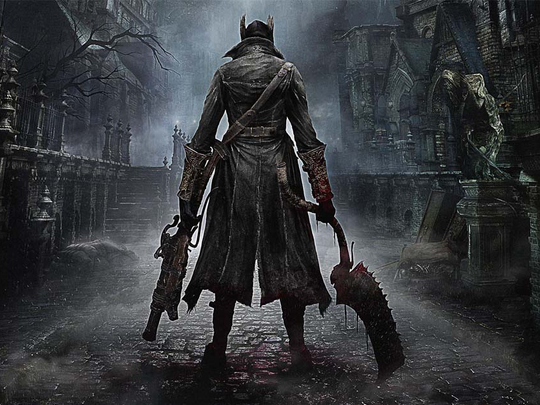
There was a time when most video games were weird. This was before the internet, before online FAQs and walkthroughs, before the industry transmogrified into an imitation of Hollywood, signposting every release with masses of pre-release hype, pigeon-holing experiences into genres and conventions. You had to learn games and their individual systems; they were discreet and mysterious. They gave you very little.
This is one of the reasons why From Software’s triumvirate of masterpieces - Demon’s Souls, Dark Souls and now Bloodborne - are so revered by veteran gamers. They make games mysterious again. Through their complex combat systems, weird trap-like environments and pitiless enemies, they require the player to master everything afresh.
Playing a game by Hidetaka Miyazaki after completing most modern action adventures is like trying to fly a plane after passing your driving test. You are going to crash. And so now the reviews are coming in, and if fans of Miyazaki were ever in doubt about Bloodborne, they can rest assured. It is good.
While its set up is similar to the Souls titles (you’re still a nameless journeyman warrior, this time entering a plague-ridden town on a sort of hazy quest, and you still gather organic resources from downed enemies in order to level up), the visual style is different - and the combat is upturned. The character now has a gun instead of a shield, which would be a minor point in most titles, but it is pivotal here.
“The whole ethos of combat in Bloodborne is different from Souls,” says Rich Stanton in his exhaustive Eurogamer review . “The latter games excel at interplay - balancing defence and offence, requiring you to switch between the two at the right moment or break the cycle with parries. Bloodborne is all offence. The hunter is capable of ripping apart enemies, and even engaging groups, in a way that the Souls protagonists never were. You don’t have a shield because frankly it wouldn’t fit - this protagonist is all about pressure and staying on the attack regardless of what the enemies are doing.”
But as with all the titles in this series, Bloodborne, though huge and seemingly impenetrable at first, can be mastered.
As Jim Sterling writes in his review : “No challenge in Bloodborne ever feels truly insurmountable, always giving you just enough hope to realize [sic] that you’ve ‘got’ this, even if it takes all day. What first induces panic and irrational mistakes eventually reveals openings through which to strike, as well as poorly defended areas of the body. “Where a lesser game might cause me to throw away the controller in frustration, Bloodborne keeps me glued, because it always gives me some clue that I’m improving, that I can handle this, and that I’m going to, in the words of the internet, Git Gud.”
Reviewers are also talking about the architecture of the game; not it’s building design, but the way the environments link together into a coherent whole, complete with shortcuts and hidden pathways linking new areas on multiple levels. “Bloodborne tells a story with its environments as you press onward, echoing its plot within its architecture and its enemies,” writes Kevin VanOrd for Gamespot.
“You return to earlier areas to find they aren’t as they once were, and the boundary between reality and nightmare becomes fuzzier with each slain boss.
“The way these areas join together enhance the joys of exploration. You discover a path leading from a swampy cave, which in turn guides you to a series of ladders. At the top of the final ladder, you realize where this path has taken you, and can only marvel at the brilliant way these two places, so seemingly distant from each other, are united.”
The game’s varied and horrifying bestiary has also promoted some rich descriptive prose. “Perhaps worse than the menace of the unknown are the very visible threats, the misshapen monstrosities and eldritch entities standing defiantly in plain site,” writes Sterling. “An oversized porcine behemoth waits distinctly at the end of a long tunnel, a mound of decayed flesh and skulls drags itself along an open road, all in plain view of an adventurer who knows there is no way to progress except through the hideous things ahead ... and there’s just no telling what those things are capable of until they’re tearing their victims apart.”
There have been some downers. Several reviews, including Polygon’s , mention the game’s long loading times, which are rendered more frustrating given the amount of times you’re likely to die. There are also some frame rate issues in more visually dense environs.
Sony has promised patches at a later date, of course. There is also little so far on the game’s multiplayer components (including co-op play in the new “Chalice Dungeons”) - most sites are holding off on providing scores until these have been tested. But the Metacritic average is already telling its own story: 93 per cent after 35 reviews.
Bloodborne has managed to retain what its predecessors brought to modern gaming - their sense of oblique mystery, their uncompromising difficulty - but it has changed enough to become its own entity.
This is a more aggressive game, but one still steeped in learning the rhythms of an arcane universe. Miyazaki writes beautiful symphonies of blood and death, and this could be his major orchestral work.








